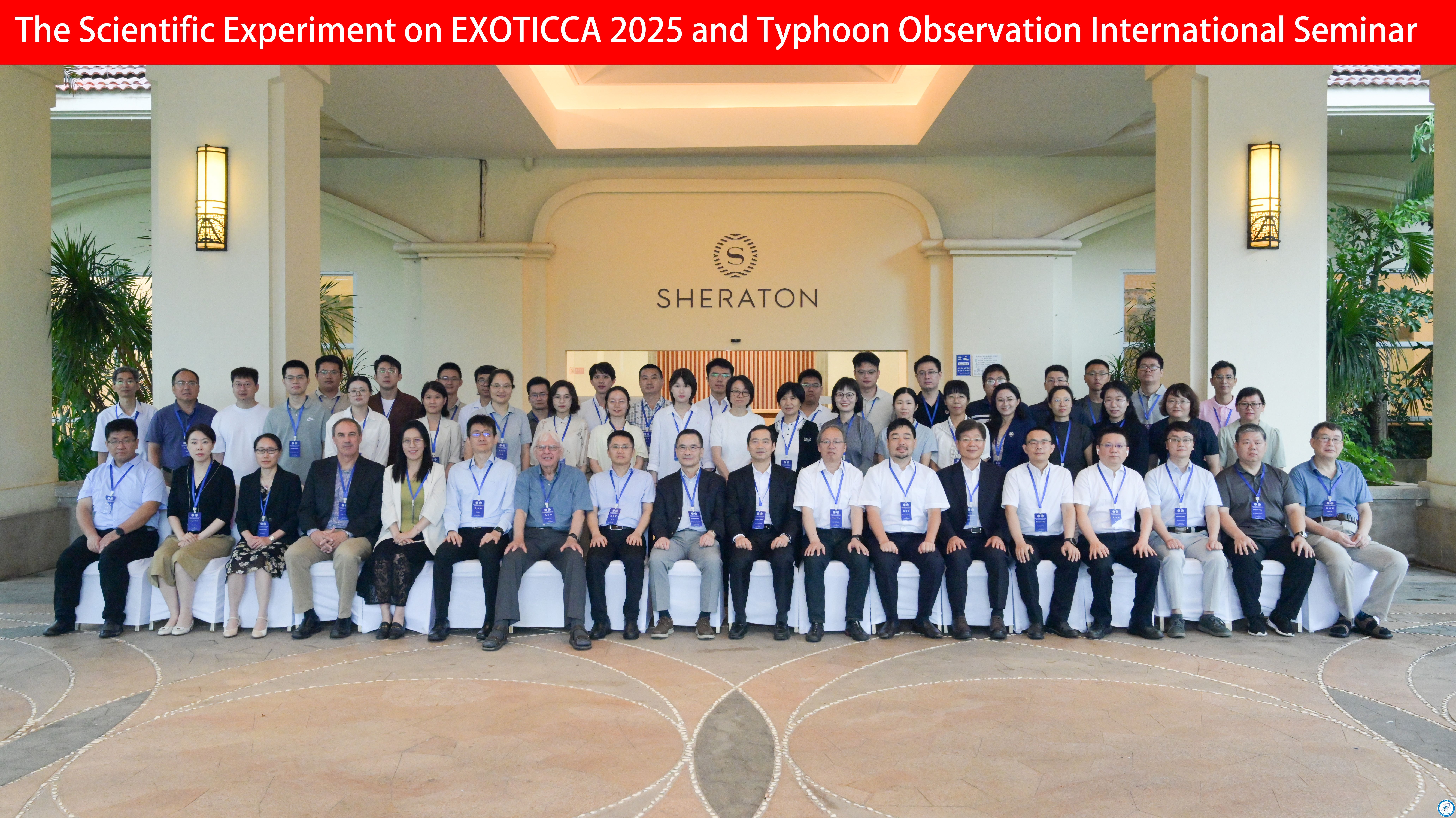International Experts Gather in Hainan to Advance Cooperation and Address Asia-Pacific Typhoon Challenges
June 30, 2025 Haikou, China

On the morning of June 26, amid the wind and rain brought by a tropical cyclone making landfall in Hainan, nearly seventy meteorological experts and scholars from countries including China, the United States, Germany, Japan, South Korea, the Philippines, Vietnam, and Hong Kong (China) gathered in Haikou. They convened to share the latest advancements in international typhoon research, discuss the 2025 plan for the third phase of the Experiment on Offshore Tropical Cyclone Intensity Change (EXOTICCA), promote international cooperation in coordinated typhoon observation, and facilitate the sharing and application of scientific experiment results.
Against the background of global climate change and accelerating urbanization, the threat of typhoon disasters to the coastal regions of the Asia-Pacific has intensified in recent years. To further enhance typhoon monitoring and warning capabilities, the EXOTICCA project was established. It is the first international scientific cooperation project under the UNESCAP/WMO Typhoon Committee initiated and led by China. The project is primarily dedicated to innovating typhoon observation technology. By advancing the research and development of new instruments and coordinated observation strategies, and integrating multi-source observation platforms with artificial intelligence algorithms, it aims to explore the physical mechanisms of typhoon intensity changes and improve the forecasting capabilities for typhoon intensity and its destructive potential. Since its launch in 2014, the project has undergone a decade of development, successfully developing various new typhoon detection technologies such as unmanned aerial vehicles (UAVs), unmanned surface vehicles (USVs), and lidar. It has established standardized scientific experiment procedures, achieved multi-platform coordinated observations, and progressively refined a comprehensive typhoon experiment system based on land, sea, air, and space platforms.
Dr. Robert Rogers, Scientific Director of the Asia-Pacific Typhoon Collaborative Research Center (AP-TCRC) and the newly appointed Chief Scientist of EXOTICCA, pointed out that the upcoming third phase of EXOTICCA is dedicated to pushing scientific experiments into the deep sea. It will also advance international cooperation with neighboring countries in the Asia-Pacific region. By utilizing the diverse observation methods of each country and leveraging the advantages of multi-location coordinated observations, the goal is to achieve a broader understanding of the physical processes of typhoon evolution, thereby enhancing the level of typhoon forecasting across the Asia-Pacific region.
During the seminar, experts also shared progress on Japan’s T-PARCII (Tropical cyclones: Pacific Asian Research Campaign for Improvement of Intensity estimations/forecasts) project. Presentations covered various typhoon observation techniques, including aircraft penetration, dropsondes, and Fengyun satellites, as well as orographic rainfall observation. The discussions also explored the possible mechanisms and predictability of secondary eyewalls and the influence of updrafts on typhoon intensity and precipitation. The seminar reviewed the forecasting experience and disaster mitigation practices for Super Typhoon Yagi and Typhoon Man-Yi in 2024. Furthermore, experts from the International Centre for Water Hazard and Risk Management (ICHARM) and the Hydrological Bureau (Information Center) of Huaihe River Commission introduced technologies for forecasting the impact of typhoon-induced floods and the intelligent management of the Huaihe River system based on digital twins, respectively.
Prof. Johnny C. L. CHAN, Chairman of the International Scientific Steering Committee (ISSC) of the AP-TCRC, organized the participating experts to engage in in-depth discussions. They focused on issues such as the selection of coordinated observation technologies, the integration and sharing of observation data, and how to better use observation results to improve forecasts, proposing recommendations and plans for international coordinated typhoon observation. In response to the current state of typhoon defense in the Asia-Pacific region, the international experts unanimously adopted the "Haikou Initiative," calling on all sectors of society in the region to strengthen international cooperation and scientific experiments to mitigate the potential threats and impacts of tropical cyclones on East Asia.
Authors: LI Zhongboyun, LIN Yutong, SONG Ziyang
Reviewers: XU Xiangchun, TANG Jie, ZHU Qingyi
